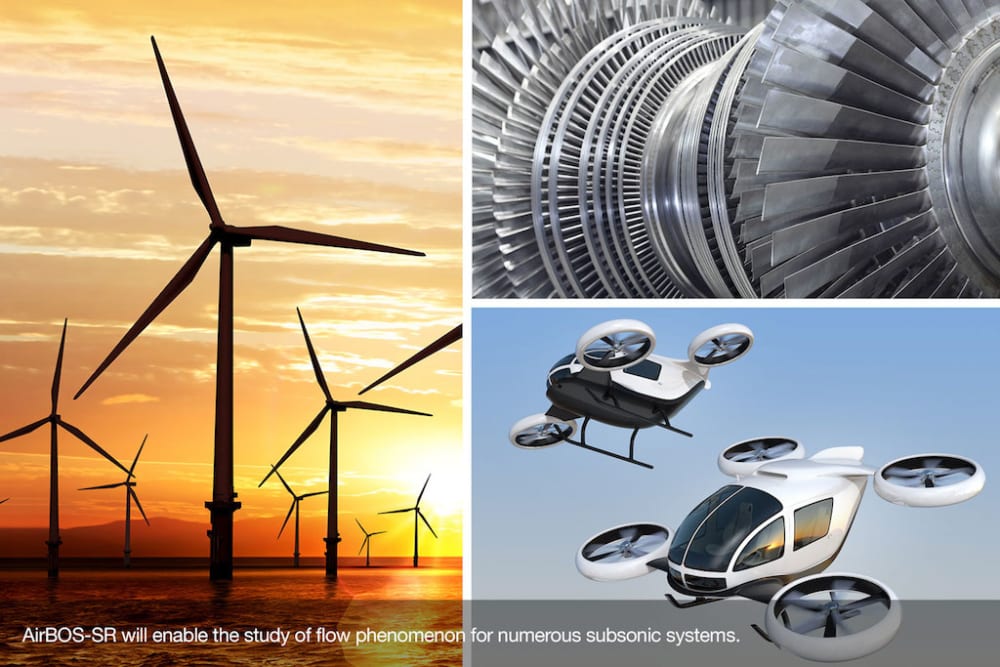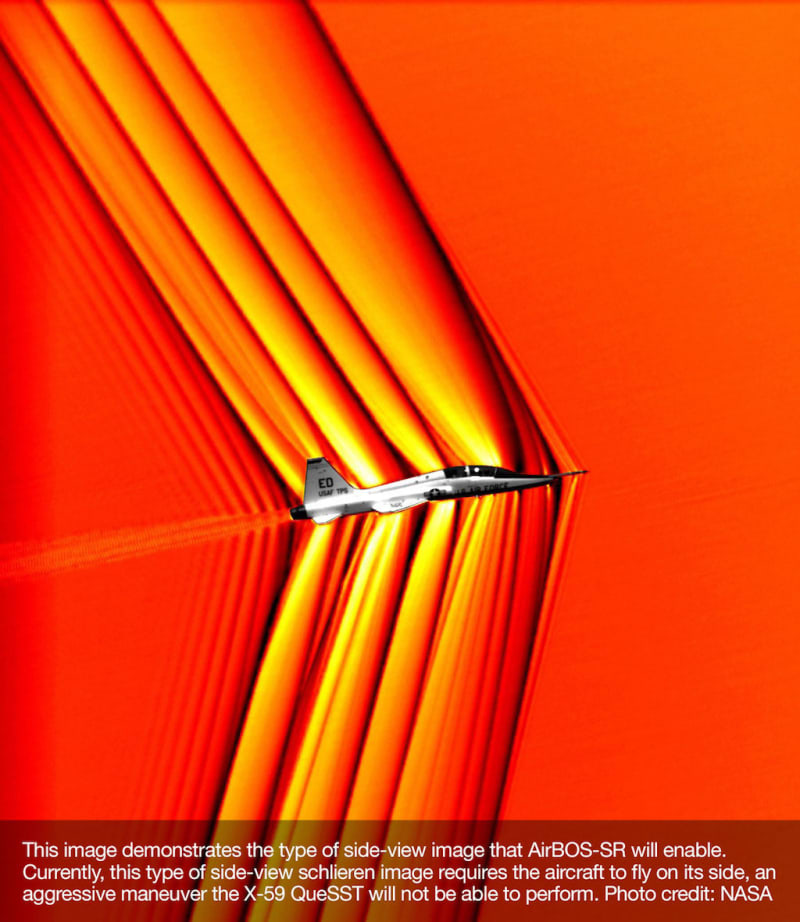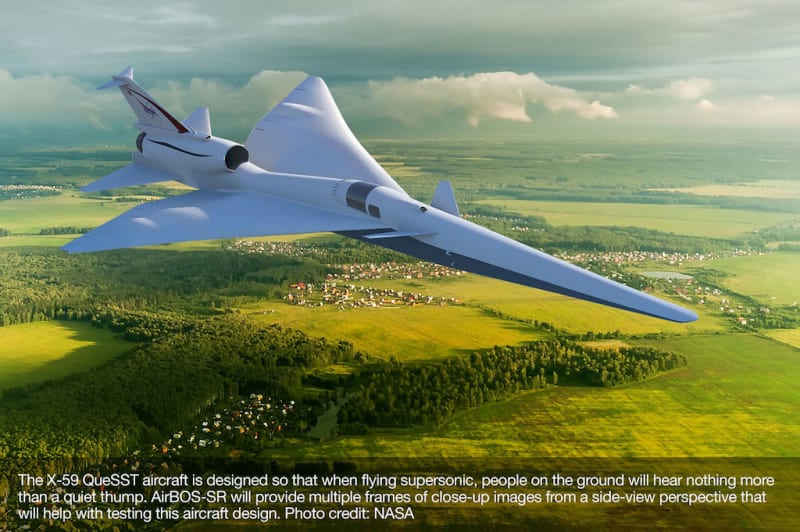
Supersonic flight over land is currently severely restricted because sonic booms created by shock waves disturb people on the ground and can damage property. In 2022, NASA will begin validation tests of its X-59 Quiet SuperSonic Technology (X-59 QueSST) aircraft, which is anticipated to produce a soft “thump” rather than a disruptive sonic boom. To help achieve this milestone, NASA researchers have developed an innovative approach to capturing images of shock waves emanating from aircraft in supersonic flight. They will use these images to study shock waves as part of the effort to make sonic booms quieter and open the possibility of overland supersonic flight. In addition, this technology will enable the study of flow phenomenon for other systems, including wind turbines, engines, rotary aircraft, and subsonic aircraft.
It has been a decade in the making to adapt what was originally a wind tunnel-based method into a proven flight test technique. The improved AirBOS-SR method—which stands for Air-to-Air Background Oriented Schlieren with Simultaneous Referencing—uses schlieren imaging with a novel way to collect reference and data images to secure measurable shock waves.
Background oriented schlieren techniques capture shock wave images by visualizing air-density gradients caused by aerodynamic flow. They allow researchers to study life-sized aircraft flying through Earth’s atmosphere, which provides more informative results than modeling or wind tunnels.
Background oriented schlieren flight test techniques require the use of the ground, ocean speckle, or a celestial object, such as the sun, as a background reference point. These techniques work by comparing a set of reference frames taken before a target aircraft enters a field of view with a set of data frames collected after the aircraft enters the field.
To evaluate the X-59 QueSST aircraft, NASA needs to see multiple frames of close-up images including a side-view perspective. AirBOS-SR will meet this need for NASA while also opening up a new perspective for other applications.
With AirBOS-SR in supersonic applications, two aircraft fly in formation—a target aircraft and a camera-equipped aircraft that takes both reference and data images of the target aircraft. The camera-equipped aircraft continuously takes reference frames that are automatically paired with individual data frames. As a result, AirBOS-SR allows for different viewing angles and multiple flight conditions, such as acceleration and aircraft configuration changes. Because it concurrently acquires reference and data images, AirBOS-SR is a highly flexible schlieren technique.
Furthermore, AirBOS-SR benefits applications well beyond NASA’s supersonic needs. In subsonic applications—including airfoils, helicopters and other rotorcraft, and non-aircraft applications such as wind turbines—AirBOS-SR helps designers better understand vortex location development to improve performance, reduce noise, and understand relative positioning for increased efficiency.
Benefits
-- Flexible: AirBOS-SR’s simultaneous data collection allows for real-time adjustments and enables data to be collected at different perspective angles.
-- Efficient: This improved schlieren technology enables visualizations of dynamic conditions, such as accelerations, decelerations, and store separations.
-- Improved data: By collecting larger sample sets of data and reference images, AirBOS-SR provides a higher signal-to-noise ratio and improved images.
-
Awards
-
 2019 Top 100 Entries
2019 Top 100 Entries
Like this entry?
-
About the Entrant
- Name:Daniel Banks
- Type of entry:teamTeam members:Daniel Banks, NASA's Armstrong Flight Research Center
James T. Heineck, NASA's Ames Research Center - Patent status:pending








